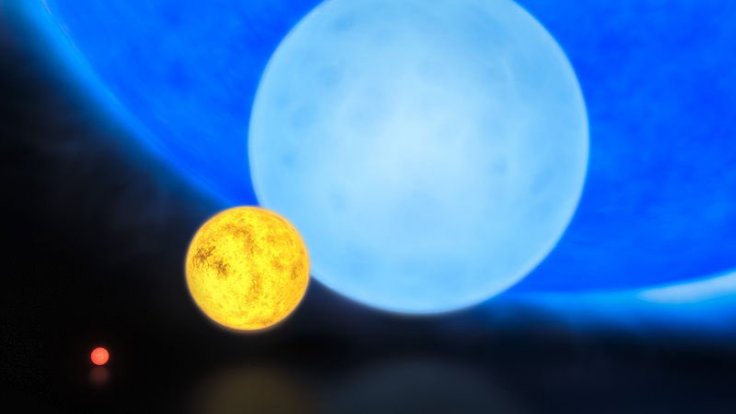Advancements in astronomy has opened the pandora's box in recent years, the latest being that of our Sun which is no longer the largest star in the universe. R136a1, according to the mass, is the largest star which is 160,000 light years from Earth in the Large Magellanic Cloud, a small galaxy that orbits the Milky Way.
But if we talk about the diameter, then the biggest star in the universe is UY Scuti which has an approximate diameter of 1,700 times than that of the sun.

Is There a Possibility of Life Around these Largest Stars?
A report published by livescience.com referred to the renowned astronomer at the Lowell Observatory in Flagstaff, Arizona Phil Massey who stated that R136a1 is much younger than the sun. Our sun is 4,5 billion years while R136a1 is nearly 1 million years old.
Massey while giving an interesting comparison said that if Sun is considered to be a cherry then UY Scuti will be a 10-story high sphere. He also stated that UY Scuti is 1000 light years away from Earth and its light varies according to the distance. He also added that their brightness twinkles and flashes over time thus making it difficult to give a definite answer.
There have been many questions on social media over the possibility of life around the stars discovered in recent years. However, scientists have failed to provide any definite answer to these queries.
In addition to the above stars there are several others that happen to be the contestants for the position of largest stars. WOH G64, another red supergiant with approximate age of 5 million years positioned in Large Magellanic Cloud. Another in the list is VY Canis Majoris that happens to be 8.2 million years old. Interestingly, these two stars also have diameters around 1,500 times more than the Sun's.
It is pertinent to mention despite its size, Sun is undoubtedly the source of life on our planet and the most suitable star for our solar system. Replacing it with any of the bigger stars at the centre of our solar system will result in engulfing and vaporizing as many as first five planets.









